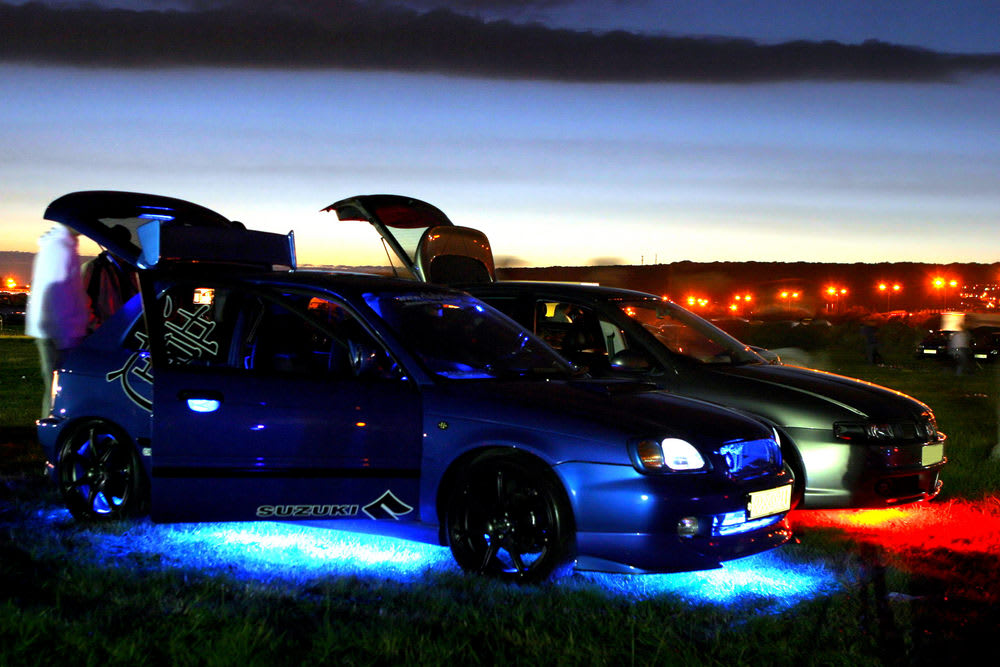

Your car has a number of important lights on it – headlights, turn signals, taillights, brake lights, running lights, and more. However, your options aren’t limited to what was installed by the automaker. You can install aftermarket taillights and lenses, different headlights and more. That includes underbody car lights – also called glow lights. These come in a wide range of colors and provide a cool glow under your car while it’s driving. How do they work?
Types on the market
There are two primary types of underbody car lights available – fluorescent bulbs, which are the older of the two, and becoming rarer these days – and LED light strips. These are newer, and are becoming the norm for the industry.
Both types are mounted under the car, generally to the underside of the frame. Most of the time, they must be attached with zip ties. Once the strip is installed, it must be wired. This requires a module box and electrical wires. The box is usually mounted near the front of the car, and will connect to the light strips in one of two ways.
The older method required an individual connection to each strip, which meant running four sets of wires under your car (one for each light strip as they’re generally installed on both the left and right sides, as well as the front and rear). A newer method allows them to be connected in series, so the module would connect to the front light strip, then that strip would connect to the second, and so on.
The module box is wired directly to the car’s battery for power (and is usually mounted on top of the engine). Most systems are operated directly from the module box, so there’s no need to splice into your headlight switch. A remote allows you to activate the lights from inside the car.



